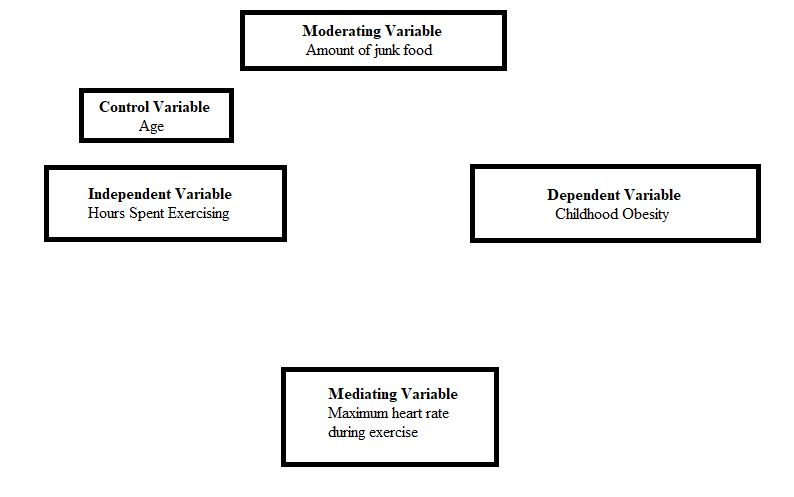While writing your PhD thesis, you will need to develop a framework. There are two different kinds of frameworks used for a PhD thesis. The first is known as a conceptual framework, and the second is called a theoretical one. The former framework is the one which illustrates the relationship between different types of variables taking part in your thesis. The focus of our today’s discussion will also be that former framework.
A conceptual framework is a framework that defines the relevant objectives for your research study. It also maps out the relationship that exists between different variables. As you are here, it means you do not know about this framework and are looking for a proper guide. Well, this article is for you. In today’s post, we will discuss the different variables involved in a research study and the steps to develop this important framework.
Different Types Of Research Variables In A Phd Thesis
As it is said earlier, a conceptual framework is one that defines the existence of a relationship between your research variables. Do you know what those variables are? As guessed, you have no idea about them. Knowing the variables is important to develop a good conceptual framework. Therefore, a brief description of all the types of variables is as follows:
Dependent Variable
It is the first and most important part of a PhD thesis variable. A dependent variable is a variable that changes as a result of slight manipulation in the independent variable. It is mostly the outcome that you intend to measure in a research study. When you see it from a cause-and-effect perspective, it is the effect.
Independent Variable
The second crucial variable is called the independent variable. Its meaning and definition are clear from the word “independent.” This variable in a conceptual framework of a PhD thesis is a stand-alone variable and is not changed or gets manipulated by various extraneous variables. For example, the age of a person is an independent variable.
Moderating Variable
The third type of variable in a research study is the moderating variable. This variable does not take part in the research process directly; however, it affects the relationship between dependent and independent variables. The moderating variable is exclusively used in the frameworks of quantitative research studies.
Steps For Developing A Conceptual Framework
A conceptual framework is the representation of the relationship that you expect to observe among variables of a research study. Such frameworks are generally developed in chapter 1 or 2 of a PhD thesis. Sometimes, both chapters include this framework. However, do you know the steps to develop this framework? No. Thus, a brief description of all the steps involved in its development is as follows:
Step 1: Choose Your Research Question
First of all, you need to be very clear about the focus of your PhD thesis. This clarity only comes when you have chosen your research questions well. The research questions guide you in determining what you need to find in your PhD thesis. In simple words, it lets you identify the research variables among which you have to find a relationship. Thus, choose your research questions and understand them properly.
Step 2: Perform An Extensive Literature Review
A literature review is an important step in the development of a conceptual framework. It is because an extensive survey of the existing knowledge provides you with the necessary background to study and interpret the relationship between variables. By reading different publications related to your research topic, you get to know how other authors have developed the relationship between their research variables. Thus, perform an extensive review of the literature and have an idea of how to develop a relationship between variables.
Step 3: Identify Your Dependent And Independent Variables
The 3rd step is the most crucial one. It asks you to identify your dependent and independent variables. An explanation of these variables is given above. Identifying these variables is important because you cannot test the cause-and-effect relationship between the variables until you identify them right. Note that there could be more than one independent variable affecting the dependent variable. So, be aware of this too.
Step 4: Identify Other Impacting Variables
4th step is about the identification of other variables that impact your research. These are the variables that do not take part in the research process but can affect the relationship that exists between your independent and dependent variables. Do you know what those variables are? The list of those three variables is as follows:
- Moderating variables
- Control variables
- Mediating variables
Step 5: Visualise The Relationship
Once you have performed an extensive literature review and identified all your research variables, it is time to visualise the relationship that exists between them. Just have a deep look at all your variables and see how they relate to each other. Use boxes and arrows roughly to visualise this relationship between variables.
Step 6: Develop The Framework
Lastly, after visualising the relationship, start developing the conceptual framework. You must make use of boxes and arrows to develop this framework, and each arrow must point towards the right direction. First, write the independent and dependent variables and then relate other impacting variables. However, if you feel any difficulty in its development, get help from a PhD thesis writing service.
An Example Framework
After reading the information above, you now have a good idea of this framework, the variables included in it, and the steps to develop it. Now, let’s have a look at the actual framework. Thus, an example framework is as follows:

Final Thoughts
To sum up, a robust conceptual framework is necessary when you are writing a PhD thesis. It is your framework that guides you about different variables that exit your research study and uncovers the relationship between them. In this guidepost, we have discussed the steps involved in developing this framework. So, read all the information above and act accordingly.








Comments are closed.